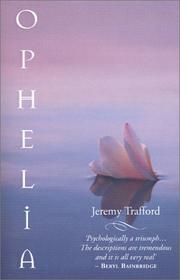
In Stephanie Merritt's confident, absorbing debut, Gabriele Harvey is the niece of the media baron Sir Edward Hamilton Harvey, who has privatised the cultural faculty at which she is a graduate student. This development finds favour neither with her nor with the charmingly old-fashioned and factional staff, but her angst is neatly plastered over by the arrival of Sir Edward's mole, the new professor of cultural studies, Piers Gaveston.
Gaveston has the kind of arresting beauty which ensures attention and commands obedience, and Gaby finds herself ensnared by his snakish charms. He responds with a perfunctory, almost dutiful air. They become engaged.
Term commences, and the aloof, narcissistic Gaveston is rarely seen except on his television appearances. Then the storm breaks: Gaveston and Sir Edward are embroiled in an affair. From here in, the twists accelerate. Arms-dealing, blackmail, suicide: the pace picks up as Gaby begins to uncover the truth.
From the very title (Gaveston was the notorious catamite of Edward II), this book has a contagious fascination with time and change. The narrative is overlaid with Gaby's love of history and sense of place. This brings the conclusion added piquancy, resonating with the feel of T S Eliot's line: "Time past and time present / Are both perhaps present in time future."
History, and the sense of identity it can confer, is also central to Look at Me (417pp, Picador, £9.99 pbk), Jennifer Egan's gripping second novel. The central figure is a model named Charlotte. She grew up in Rockford, a faceless American town which she associates with "the meek, the sick and the useless".
The novel opens with her returning home to convalesce after being wrecked by a car crash, her head reconstructed with 80 titanium screws. Revisiting her old haunts, she comes to her schoolfriend Ellen's house, and meets a second, teenaged Charlotte, Ellen's daughter. Clearly named in her honour, this junior version is negotiating her way through the claustrophobic town, finding her own ways to escape and to discover herself.
When she moves back to her Manhattan apartment, Charlotte (elder) finds that her life as a model is irretrievable. Her old friends look straight through her. Without the passport of her looks, she has become invisible, and is nearly broke. She is an inveterate liar and a deeply private entity, but she finds herself opening her door first to a private detective, and then to Irene, apparently a reporter on the New York Post.
In a city obsessed by appearance, her transmogrification becomes a commodity. Charlotte and her story are reconstructed for the cameras: "Charlotte" is fabricated to sell the forthcoming book, film, cosmetics range, television show . . .
The plot is a glorious and intricate mechanism, but it is Egan's style that ignites the imagination. Her prose is balanced, evocative and beautiful. And her underlying interest in the nature of self, image and reality permeates this sardonic and forceful work.
Original article published in The Daily Telegraph, in January, 2002

